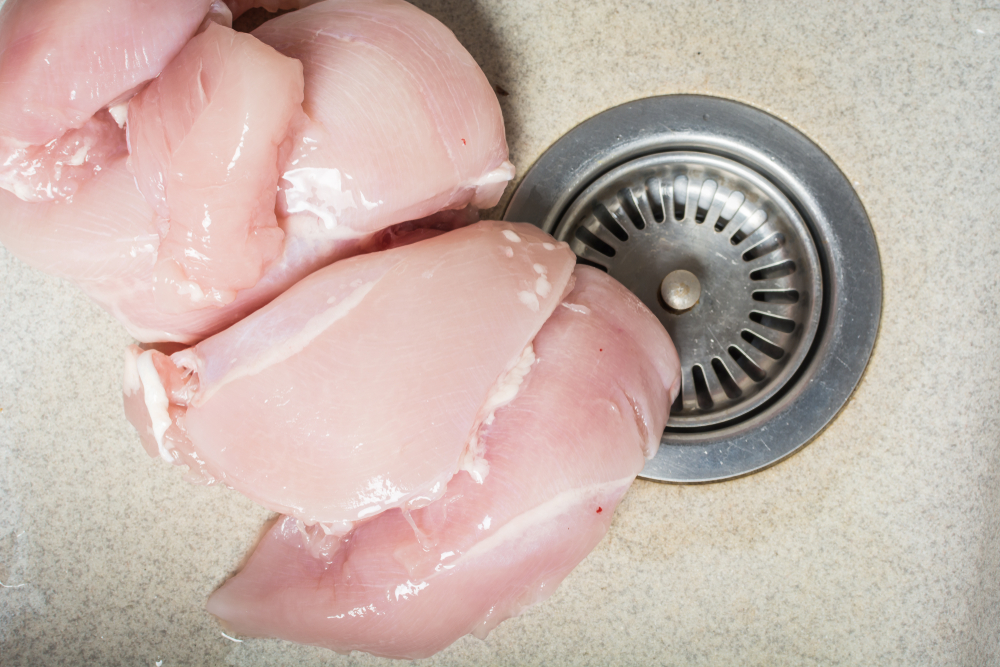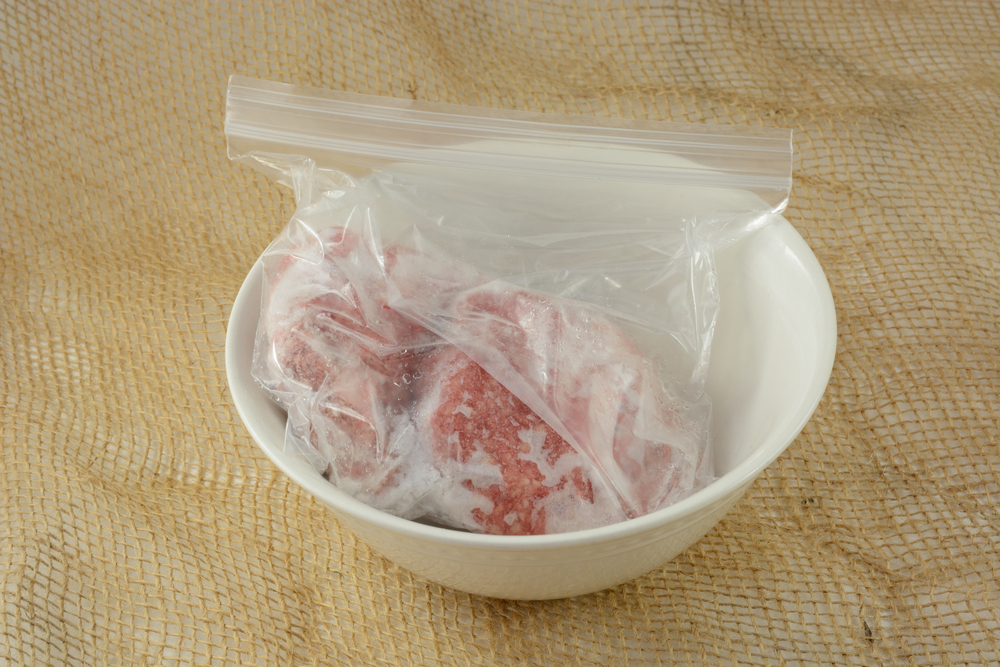Thawing meat is an essential part of meal preparation, but it is often overlooked. However, it is crucial to understand the best methods for thawing meat to ensure that it is safe to eat and retains its quality.
There are several factors to consider when thawing meat, including the type of meat, its size, and the time available for thawing.
Understanding the importance of safe thawing is critical to avoid the risk of foodborne illness. When meat is thawed at room temperature, bacteria can multiply rapidly, leading to the growth of harmful pathogens.
Therefore, it is essential to use safe thawing methods to prevent the growth of bacteria and ensure that the meat is safe to eat.
Different types of meat have different thawing needs, and it is essential to understand these requirements to ensure that the meat is thawed correctly.
For example, smaller cuts of meat, such as steaks and chicken breasts, can be thawed relatively quickly, while larger cuts, such as roasts and whole birds, require more time. Additionally, certain meats, such as fish and shellfish, require specific thawing methods to maintain their quality.
Key Takeaways
- Thawing meat safely is crucial to avoid the risk of foodborne illness.
- Different types of meat have different thawing needs, and it is essential to understand these requirements.
- There are several methods for thawing meat, and the best method depends on the type of meat and the time available for thawing.
Understanding the Importance of Safe Thawing
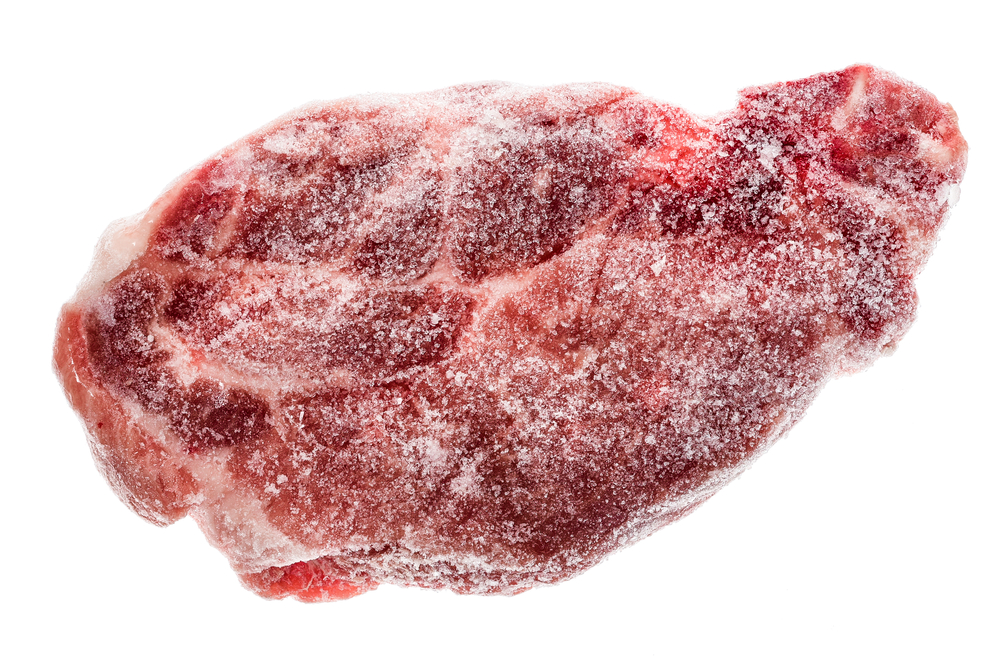
Thawing meat is an important step in cooking, but it can also be a potential source of foodborne illness if not done safely. When meat is frozen, bacteria are in a dormant state and do not grow.
However, once the meat is thawed, the bacteria can become active and grow rapidly if the meat is not thawed properly.
Bacterial growth can occur at temperatures between 40°F and 140°F, also known as the “danger zone.” This means that if meat is left to thaw at room temperature, it can quickly reach the danger zone and become unsafe to eat.
It is important to use a safe thawing method to prevent the growth of bacteria and ensure that the meat is safe to eat. There are several safe thawing methods, including:
- Refrigerator thawing: This method involves placing the frozen meat in the refrigerator and allowing it to thaw slowly over time. This is the safest method as it keeps the meat at a safe temperature (below 40°F) and prevents bacterial growth. However, it can take several hours or even days to thaw meat using this method.
- Cold water thawing: This method involves placing the frozen meat in a leak-proof bag and submerging it in cold water. The water should be changed every 30 minutes to ensure that it stays cold. This method is faster than refrigerator thawing but requires more attention to ensure that the water stays cold and the meat does not become unsafe to eat.
- Microwave thawing: This method involves using a microwave to thaw the meat. It is the fastest method but can also be the riskiest as it can cause uneven thawing and may lead to bacterial growth if not done properly.
It is important to note that meat should never be thawed at room temperature as this can lead to bacterial growth and cause foodborne illness. Additionally, once meat is thawed, it should be cooked immediately to prevent the growth of bacteria.
In summary, safe thawing methods are crucial for preventing the growth of bacteria and ensuring that meat is safe to eat. Refrigerator thawing is the safest method, but it can take a long time.
Cold water thawing is faster but requires more attention, while microwave thawing is the fastest but also the riskiest. Regardless of the method used, meat should never be thawed at room temperature and should be cooked immediately after thawing to prevent bacterial growth and foodborne illness.
Different Types of Meat and Their Thawing Needs
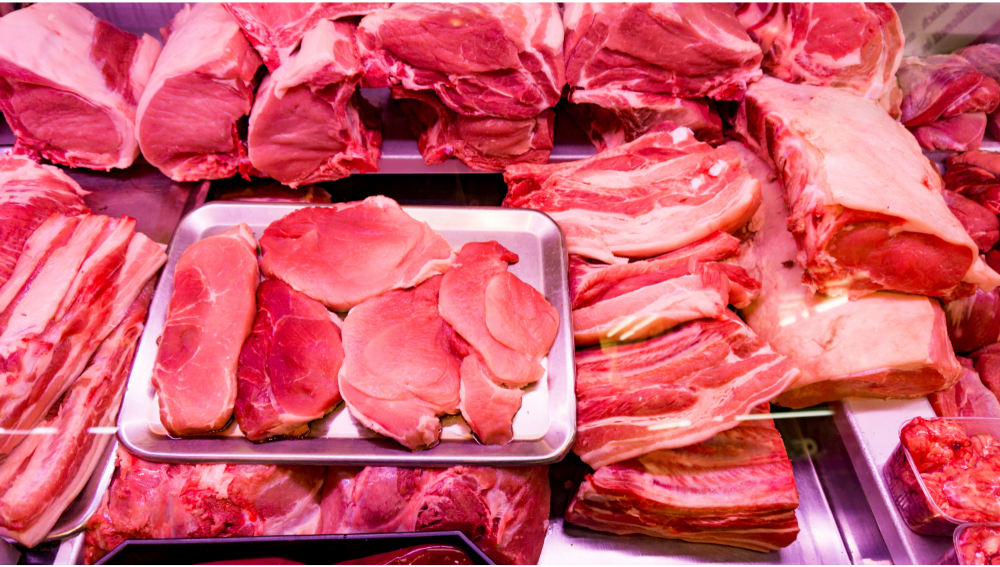
Thawing meat is a crucial step in food preparation that should be done correctly to avoid foodborne illnesses. Different types of meat have varying thawing needs and should be treated accordingly.
Here are some guidelines for thawing different types of meat:
Turkey
Turkey is a large bird that requires ample time to thaw. It is recommended to thaw a turkey in the refrigerator for 24 hours for every 4-5 pounds of turkey. For example, a 20-pound turkey will take approximately 4-5 days to thaw in the refrigerator.
Alternatively, the turkey can be thawed in cold water, which takes about 30 minutes per pound. It is essential to change the water every 30 minutes to ensure that the turkey remains at a safe temperature.
Beef and Steaks
Beef and steaks can be thawed in the refrigerator or by using the cold water method. Smaller cuts of beef and steaks can thaw in the refrigerator for 12-24 hours, while larger cuts may take up to 3-5 days.
For the cold water method, it is recommended to change the water every 30 minutes for the beef to thaw evenly.
Chicken Breasts
Chicken breasts are smaller cuts of meat that can be thawed quickly. They can be thawed in the refrigerator for 12-24 hours or in cold water for 1-2 hours. It is essential to cook chicken breasts immediately after thawing to avoid bacterial growth.
Pork and Sausages
Pork and sausages can be thawed in the refrigerator or using the cold water method. Smaller cuts of pork and sausages can thaw in the refrigerator for 12-24 hours, while larger cuts may take up to 3-5 days. For the cold water method, it is recommended to change the water every 30 minutes for the pork to thaw evenly.
Poultry
Poultry includes chicken, turkey, and other birds. It is recommended to thaw poultry in the refrigerator for 24 hours for every 4-5 pounds of poultry. For example, a 10-pound turkey will take approximately 2-3 days to thaw in the refrigerator.
Alternatively, the poultry can be thawed in cold water, which takes about 30 minutes per pound. It is essential to change the water every 30 minutes to ensure that the poultry remains at a safe temperature.
Red Meat
Red meat includes beef, pork, and lamb. It is recommended to thaw red meat in the refrigerator for 12-24 hours for smaller cuts and 3-5 days for larger cuts.
Alternatively, the red meat can be thawed in cold water, which takes about 30 minutes per pound. It is essential to change the water every 30 minutes to ensure that the red meat remains at a safe temperature.
Ground Meat
Ground meat can be thawed in the refrigerator, using the cold water method, or in the microwave. It is recommended to thaw ground meat in the refrigerator for 12-24 hours for smaller quantities and 1-2 days for larger quantities.
For the cold water method, it takes approximately 1-2 hours to thaw ground meat, and it is essential to change the water every 30 minutes.
Veal
Veal can be thawed in the refrigerator or using the cold water method. Smaller cuts of veal can thaw in the refrigerator for 12-24 hours, while larger cuts may take up to 3-5 days. For the cold water method, it is recommended to change the water every 30 minutes for the veal to thaw evenly.
Raw Meat
Raw meat should always be thawed in the refrigerator or using the cold water method. It is essential to avoid thawing raw meat at room temperature as this can lead to bacterial growth and spoilage.
Thawing raw meat in the microwave is also not recommended as it can lead to uneven thawing and cooking.
Methods of Thawing Meat
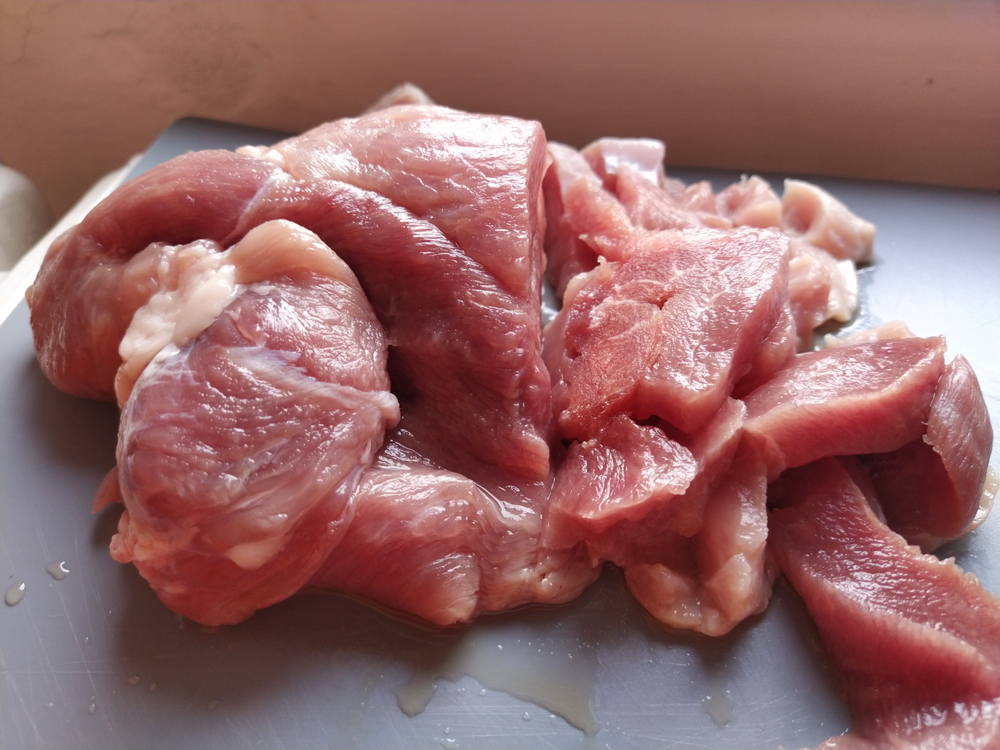
When it comes to thawing meat, there are three main methods: refrigerator thawing, cold water thawing, and microwave thawing. Each method has its own advantages and disadvantages, so it’s important to choose the right method for your specific situation.
Refrigerator Thawing
Refrigerator thawing is the safest and most recommended method of thawing meat. This method involves placing the frozen meat in the refrigerator and allowing it to thaw slowly at a constant temperature.
Plan ahead when using this method, as it can take up to 24 hours for a pound of meat to completely thaw.
To use the refrigerator thawing method, simply place the frozen meat on a plate or in a container and put it in the refrigerator.
Make sure to place the meat on the bottom shelf to prevent any drips from contaminating other foods. It’s also a good idea to place a paper towel under the meat to absorb any excess moisture.
Cold Water Thawing
Cold water thawing is a quick and effective method of thawing meat. This method involves submerging the frozen meat in a bowl of cold water and changing the water every 30 minutes to ensure that it stays cold and continues to thaw the meat.
To use the cold water thawing method, fill a large bowl with cold water and submerge the frozen meat in the water. Make sure to use a leak-proof plastic bag to prevent any bacteria from contaminating the meat.
It’s important to change the water every 30 minutes to ensure that it stays cold and continues to thaw the meat.
Microwave Thawing
Microwave thawing is the quickest method of thawing meat, but it can also be the riskiest. This method involves using the defrost setting on your microwave to thaw the meat.
To use the microwave thawing method, place the frozen meat on a microwave-safe plate and use the defrost setting on your microwave. Make sure to follow the manufacturer’s instructions for your specific microwave, as the defrost setting can vary from model to model.
Overall, it’s important to choose the right method of thawing meat for your specific situation. Refrigerator thawing is the safest and most recommended method, but it can take up to 24 hours for the meat to completely thaw.
Cold water thawing is a quick and effective method, but it requires changing the water every 30 minutes. Microwave thawing is the quickest method, but it can be risky if not done properly.
Precautions to Take While Thawing
Thawing meat is an important step in food preparation, but it is also important to take precautions to ensure that the meat is thawed safely.
Here are some tips to keep in mind while thawing meat:
- Avoid thawing meat at room temperature: Thawing meat at room temperature can cause it to enter the danger zone, which is the temperature range between 40°F and 140°F where bacteria can grow rapidly. Instead, thaw meat in the refrigerator, in cold water, or in the microwave.
- Keep meat in a leak-proof package: When thawing meat in the refrigerator, it is important to keep it in a leak-proof package to prevent juices from contaminating other foods. Place the meat on a plate or in a container to catch any drips.
- Do not thaw meat in hot water: Thawing meat in hot water can cause it to cook partially, which can lead to a loss of quality and texture. Use cold water instead.
- Change the water frequently: When thawing meat in cold water, it is important to change the water frequently to ensure that it stays cold and the meat continues to thaw. This helps to prevent the growth of bacteria.
- Do not thaw meat on the kitchen counter: Thawing meat on the kitchen counter can cause it to enter the danger zone and increase the risk of foodborne illness. Always thaw meat in the refrigerator, in cold water, or in the microwave.
- Wash hands and surfaces: It is important to wash hands and surfaces thoroughly before and after handling raw meat to prevent the spread of bacteria. Use hot, soapy water to wash hands and surfaces, and use separate cutting boards for meat and other foods.
By taking these precautions, you can ensure that your meat is thawed safely and ready for cooking.
Cooking Thawed Meat

Once the meat is thawed, it is essential to cook it safely to avoid any health risks. Here are some tips to ensure that your thawed meat is cooked thoroughly and safely.
Cooking Red Meat Cuts
For red meat cuts, it is recommended to cook them to a safe internal temperature of 145°F (62.8°C) for medium-rare, 160°F (71.1°C) for medium, and 170°F (76.7°C) for well-done.
Use a meat thermometer to check the temperature of the meat in the thickest part. Let the meat rest for a few minutes before cutting to allow the juices to redistribute.
Cooking Seafood
Seafood should be cooked to an internal temperature of 145°F (62.8°C). The flesh should be opaque and flaky, and the juices should be clear. Overcooking seafood can cause it to become tough and dry.
Cooking Without Thawing
If you are in a rush and need to cook frozen meat without thawing it, it is possible, but it requires special attention. Cooking frozen meat can take up to 50% longer than thawed meat. It is essential to ensure that the meat is cooked to a safe internal temperature to avoid any health risks.
Cooking Frozen Meat Safely
If you want to cook frozen meat safely, it is recommended to thaw it first. However, if you are in a hurry, you can cook frozen meat as long as you follow some essential guidelines.
Cook the meat in a preheated oven or on the stove over low heat. Use a meat thermometer to check the internal temperature of the meat. The meat must reach a safe internal temperature before it is safe to eat.
Perishable Foods
Perishable foods, including meat, should not be left at room temperature for more than two hours. Bacteria can grow rapidly at room temperature, increasing the risk of foodborne illness.
If you are not planning to cook the meat immediately after thawing, it should be stored in the refrigerator at 40°F (4.4°C) or below.
Test Kitchen
It’s always a good idea to test the meat’s doneness in a test kitchen before serving it to guests. This ensures that the meat is cooked to the right temperature and is safe to eat.
Refreezing Thawed Meat
Refreezing thawed meat is a common practice, but it is important to do it correctly to avoid foodborne illness. The best way to refreeze meat is to do it immediately after it has been thawed and before it has reached room temperature.
If the meat has been thawed in the refrigerator, it can be refrozen as long as it has not been sitting in the fridge for too long after it thawed.
The longer the thawed meat sits, the longer bacteria has to form on it. If the meat has been sitting in the fridge for more than 36 hours after it has thawed, it is not recommended to refreeze it.
It is important to note that the quality of the meat may be affected after it has been refrozen. The texture and taste may not be as good as it was before it was frozen.
To minimize the loss of quality, the meat should be refrozen in its original packaging or wrapped tightly in plastic wrap or aluminum foil.
When refreezing meat, it is important to make sure that it is still in its frozen state. If the meat has started to thaw and has been sitting at room temperature for more than two hours, it should not be refrozen.
To prevent freezer burn, it is recommended to use freezer-safe containers or bags when refreezing meat. Foam trays that the meat may have originally been packaged in are not recommended for refreezing as they are not airtight and can cause freezer burn.
Overall, refreezing thawed meat can be done safely if it is done correctly and within a reasonable amount of time. It is important to take precautions to avoid foodborne illness and to maintain the quality of the meat.
Special Cases: Cooking Frozen Meat Directly
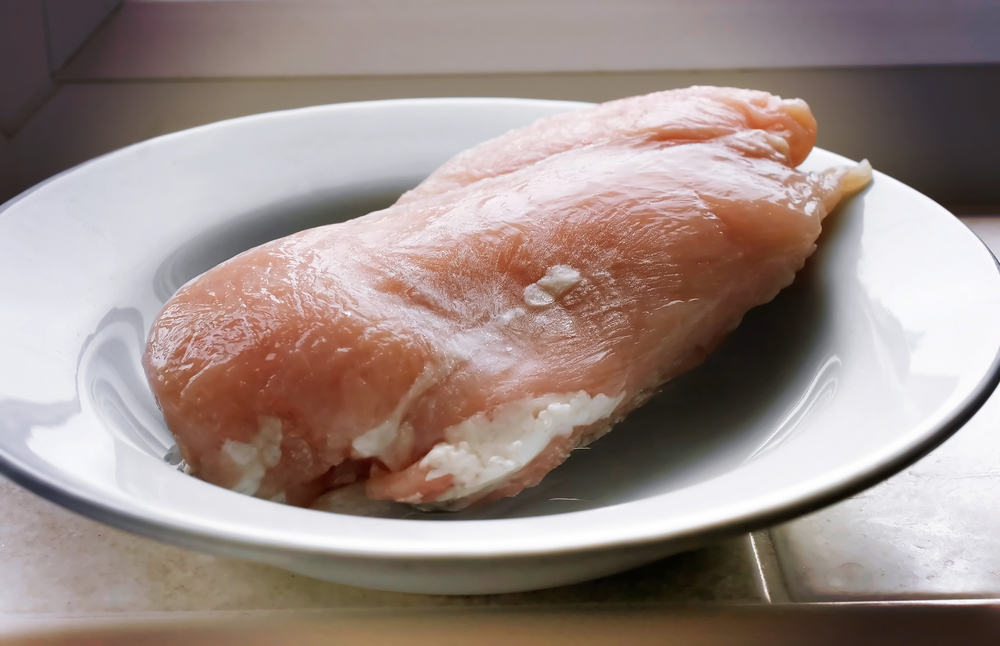
In some cases, it may be necessary to cook frozen meat directly without thawing it first. While this is not recommended for most types of meat, it can be done safely if proper precautions are taken.
Cooking Frozen Meat
Cooking frozen meat directly is a common technique used in some recipes, such as soups and stews. When cooking frozen meat, it is important to ensure that it is cooked thoroughly to prevent foodborne illness.
This can be achieved by cooking the meat for longer than you would if it were thawed, or by using a meat thermometer to ensure that the internal temperature of the meat reaches at least 165°F (74°C).
Stock and Tacos
When making stock or tacos, it is possible to cook frozen meat directly. However, it is important to note that the cooking time will be longer than if the meat were thawed first. It is also important to ensure that the meat is cooked thoroughly to prevent foodborne illness.
Soup
When making soup, it is possible to add frozen meat directly to the pot. However, it is important to ensure that the meat is cooked thoroughly before serving.
This can be achieved by cooking the soup for longer than you would if the meat were thawed, or by using a meat thermometer to ensure that the internal temperature of the meat reaches at least 165°F (74°C).
Liquid
When cooking frozen meat directly, it is important to use enough liquid to cover the meat. This will help to ensure that the meat is cooked thoroughly and that any bacteria present in the meat are killed.
Type of Meat
Not all types of meat are suitable for cooking directly from frozen. Thicker cuts of meat, such as roasts, are not recommended for this method, as they will take too long to cook and may not reach a safe temperature. Thinner portions, such as chicken breasts or pork chops, are better suited for cooking directly from frozen.
Overall, cooking frozen meat directly can be done safely if proper precautions are taken. It is important to ensure that the meat is cooked thoroughly to prevent foodborne illness.
Packaging for Thawing
When it comes to thawing meat, packaging is an important consideration. The United States Department of Agriculture (USDA) recommends using the following methods for thawing meat:
- In the refrigerator
- In cold water
- In the microwave
Regardless of the method, it is important to keep the meat in its original packaging or to repackage it in a way that is safe and effective for thawing.
If using the refrigerator method, place the meat on a plate or in a container to catch any juices that may leak during the thawing process. It is important to note that this method can take several hours or even a day or two depending on the size and thickness of the meat.
For a quicker thaw, the cold water method can be used. Place the meat in a resealable plastic bag and submerge it in a large bowl of cold water.
Change the water every 30 minutes until the meat is thawed. It is important to ensure that the bag is tightly sealed and that the meat remains submerged in the water.
When thawing in the microwave, be sure to follow the manufacturer’s instructions and use the defrost setting. It is important to note that this method can partially cook the meat in certain spots, so it is best to use this method only if the meat will be cooked immediately after thawing.
Overall, proper packaging is essential for safe and effective meat thawing. Whether using the refrigerator, cold water, or microwave method, be sure to follow the USDA’s guidelines and use appropriate packaging to ensure the best results.
Frequently Asked Questions
How long does it take to defrost meat in water?
The time it takes to defrost meat in water depends on the size and thickness of the meat. As a general rule, it takes about 30 minutes per pound of meat to thaw in cold water.
For example, a 4-pound chicken will take about 2 hours to defrost in cold water. It is important to change the water every 30 minutes to ensure that it stays cold and the meat thaws evenly.
What is the safest way to defrost meat?
The safest way to defrost meat is in the refrigerator. This method requires planning ahead as it takes the longest time, but it is the most effective way to prevent the growth of harmful bacteria.
Place the meat in a dish or on a plate in the refrigerator and allow it to thaw slowly. As a general rule, it takes about 24 hours for every 5 pounds of meat to thaw in the refrigerator.
How to defrost meat fast without microwave?
If you don’t have a microwave or don’t want to use it to defrost meat, you can use the cold water method. Fill a large bowl with cold water and submerge the meat in the water.
Change the water every 30 minutes to ensure that it stays cold and the meat thaws evenly. This method is faster than thawing in the refrigerator but requires more attention than using a microwave.
How to defrost meat fast with salt?
Defrosting meat with salt is not recommended as it can lead to uneven thawing and affect the texture and taste of the meat. It is best to stick to the recommended methods of defrosting meat.
How to defrost ground beef?
Ground beef can be defrosted using any of the recommended methods, but it is important to handle it carefully as it is more susceptible to bacterial growth than whole cuts of meat.
If using the cold water method, place the ground beef in a sealed plastic bag to prevent it from coming into contact with the water. If defrosting in the refrigerator, place the ground beef on a plate or in a dish to catch any juices that may leak.
What are the best ways to thaw frozen meat?
The best ways to thaw frozen meat are in the refrigerator, in cold water, or using a microwave. The refrigerator method is the safest and most effective, but it requires planning ahead. The cold water method is faster but requires more attention.
The microwave method is the quickest but can result in uneven thawing. It is important to follow the recommended methods and handle the meat carefully to prevent the growth of harmful bacteria.





